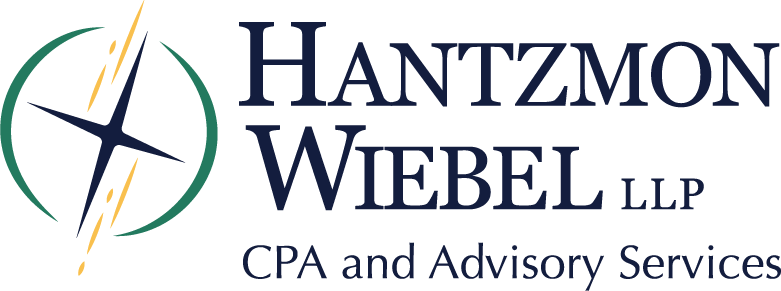Signed into law in late 2017, the Tax Cuts and Jobs Act (TCJA) resulted in the most sweeping changes to U.S. tax code in decades. Not only did it lower statutory tax rates for corporations and individuals but also included provisions that impacted business valuation, both directly and indirectly.
These tax code changes may impact business valuations in many circumstances, from divorce settlements and buy-sell agreements to estate planning. Here are just a few TCJA implications in the valuation arena.
Corporate Tax Rate
The TCJA lowered the tax rate for C corps from a top rate of 35 percent to a flat 21 percent—a significant reduction. If valuing a business on an after-tax basis with all other things being equal, after-tax flows will now be higher and, presumably, so will the business value.
However, this higher after-tax cash flow might be offset by increased capital cost, which would lower the company’s value.
The key is how cost of capital impacts the discounted cash flow (DCF) valuation method. DCF is calculated by discounting expected future net cash flow by a discount rate that reflects time value and risk to get the net present value of future cash flows—a function of the estimated cost of capital or discount rate.
One provision in the TCJA involves interest expense deductibility, which directly impacts the cost of capital. In certain cases, companies may no longer be able to fully deduct their interest expense.
For companies with average annual gross receipts of more than $25 million, the interest deduction for years 2018 through 2021 is now capped at 30 percent of adjusted taxable income or earnings before interest expense, income taxes, depreciation and amortization (EBITDA). After 2021, the interest deduction is capped at 30 percent of earnings before interest and income taxes (EBIT).
For highly leveraged businesses, these caps may limit the amount of interest expense that is deductible and would therefore reduce after-tax cash flows. This, in turn, impacts the earnings to be capitalized or discounted, adversely impacting value.
Net Operating Losses
The TCJA also changed how companies treat net operating losses (NOLs). Operating loss carryovers were first introduced in 1918 as a temporary, World War I-related relief measure to help manufacturers that suffered losses due to decreased production. Over the years, NOL carrybacks and carryforwards have been allowed, expanded and disallowed many times.
Most recently, prior to the TCJA, NOLs offset taxable income, and you could carry them back up to two tax years and carry them forward up to 20 tax years. Now, the NOLs deduction per year is limited to 80 percent of taxable income. You can no longer carry them back, but you may carry them forward indefinitely.
In terms of valuation, under the income approach, companies with NOLs generated prior to 2018 (which will expire after 20 years) must be tracked separately from NOLs generated after 2018 to accurately determine after-tax cash flows.
Note that these rules do not affect companies involved in farming and insurance and can still carry forward losses according to the 20-year limitation.
Pass-Through Entities
Historically, pass-through entities such as S corps, LLCs, partnerships and sole proprietorships were beneficial from a tax standpoint because net taxable income from these entities were simply passed through to the owners and taxed at the owners’ tax rates.
The TCJA changed this by establishing a new deduction based on the pass-through entity owner’s qualified business income (QBI). This deduction, available to individuals, estates and trusts, is equal to 20 percent of QBI, subject to some restrictions. For example, the QBI deduction is not available for certain businesses, such as most professional service companies including law, health and accounting. There are also QBI deduction limits relative to W-2 wages.
Because the TCJA lowered individual tax rates through the end of 2025, the new deduction puts C corps and S corps on more equal footing, taxwise. Relative to valuation of pass-through entities, the analyst must assess whether the QBI is applicable to the target company and consider who the likely buyer might be in terms of entity.
Also note that, under TCJA, individuals can no longer deduct state and local taxes greater than $10,000, while C corps still can. Again, valuation analysts using the income approach will now factor these differences into their assessments.
R & E Costs
The TCJA changed the treatment of certain research and experimentation (R&E) expenses. Prior to the law taking effect, companies could choose to expense R&E expenditures in the year they occurred, or they could capitalize the expenses and amortize them over the life of the research project no less than 60 months.
For tax years beginning in 2022, companies cannot expense specified R&E expenses. They must be capitalized and amortized over a five-year period, or 15 years for R&E taking place outside the U.S.
These changes will require a valuation analyst to extend DCF models for at least 10 years to capture the effects of these changes in forecasts and financial projections.
International Tax Changes
For companies doing business overseas, the TCJA radically changed the way international corporate income is handled. Prior to the new law, it was not uncommon for companies to hold foreign earnings in tax havens, indefinitely avoiding paying taxes on offshore earnings.
The new law imposed a mandatory “transition” tax on post-1986 accumulated earnings and profits. Foreign earnings and profits held in cash are now taxed one time at a 15.5 percent rate, and non-cash assets at 8 percent. Once companies pay this tax, they can take a 100 percent deduction on the foreign source of dividends, effectively allowing companies to distribute cash back into the U.S. tax free.
For valuation analysts, this means they must factor in the transition tax payment and treat it as a non-equity claim. Also, future repatriation of cash can be made on a tax-free basis, which will impact valuations going forward.
Talk to Your Advisors
The TCJA is a complicated piece of legislation, and many intricacies and nuances of the law are still being examined relative to valuation practices.
This article highlights just a few ways that the TCJA impacts valuations. Other pressing questions include how to adjust pre-TCJA multiples for post-TCJA valuations and how to address the fact that many TCJA changes are set to expire in the mid-2020s.
Because of these complications, it is wise to talk with your financial advisors to discuss how to handle TCJA-related changes in upcoming valuations.
Our team is available to discuss the TCJA and its impact on valuations with you. Contact us today at 434.296.2156 or email at info@hwllp.cpa to set up a time to meet.
Blog
Nonprofit Insights

